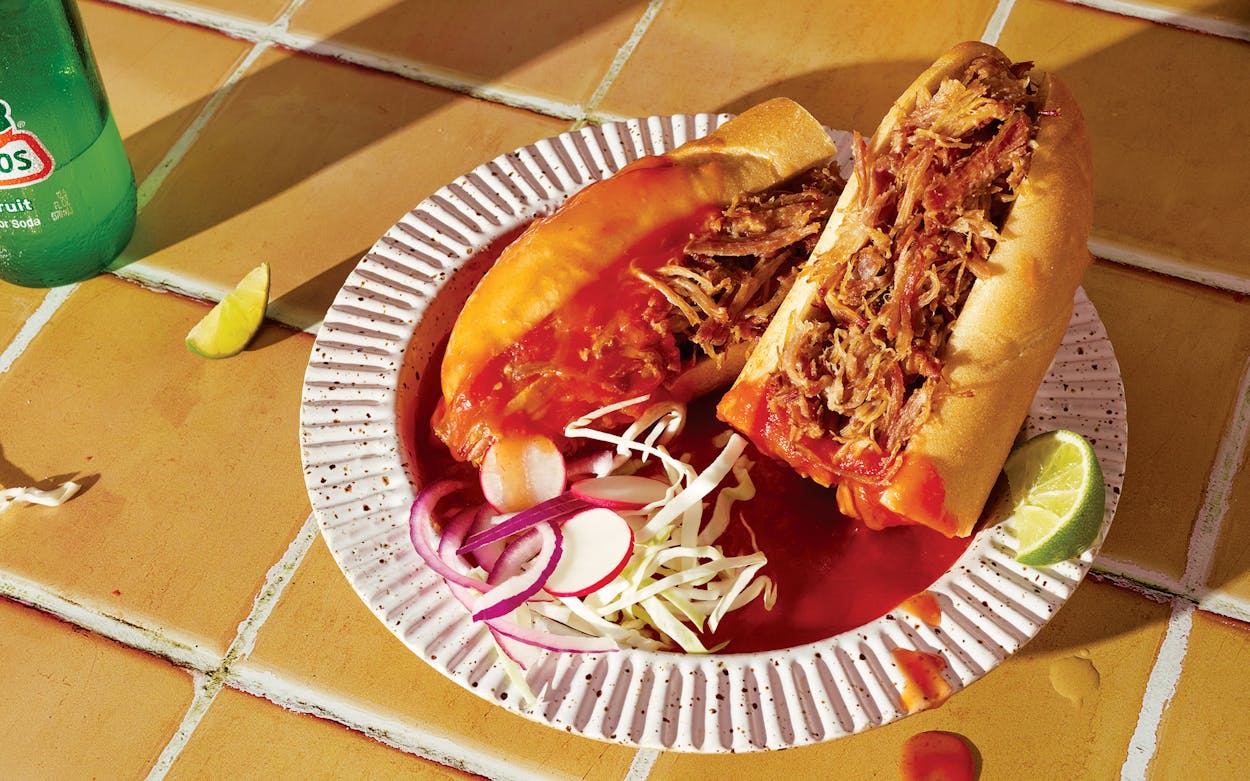With a multitude of fillings, such as pork and pineapple or tamales, the Mexican torta boasts nearly endless varieties. In the case of a typical torta, the bread is a crusty, oblong bolillo roll or the shorter, squishier telera. One torta, though, stands apart from the rest.
“Torta ahogada” translates as “drowned sandwich,” and you’ll know why when you see it. This torta is filled with carnitas (pork cooked in its own lard) and a swipe of refried beans and gets a finishing touch of mild tomato salsa, the spicier tomato-based salsa roja, or both poured over half or all of it. The sandwich maintains its integrity thanks to its uniquely sturdy bread, birote.
The product of one of Mexico’s many cross-cultural collaborations, a birote is a salty sourdough roll reminiscent of a miniature baguette, with a crusty exterior and a soft, absorbent interior. Its origins are in the second French intervention in Mexico, in the mid-nineteenth century, when Napoleon III invaded the country and installed Maximilian of Habsburg, the archduke of Austria, as emperor. The French withdrew after five years, but they left an enduring impression on Mexican cuisine. One popular tale suggests the bread and its name came from a Belgian soldier and baker named Camille Pirotte, who was stationed in Guadalajara, in the state of Jalisco.
Jorge Rojo, a Guadalajara native and the chef-owner of Ro-Ho Pork & Bread, in San Antonio, takes special pride in the sandwich. He bakes his own birote but admits it’s difficult to replicate in Texas. “At higher altitude, you have less pressure, so the bread leavens better,” Rojo says. Nevertheless, Rojo says most of his customers are tapatíos (people of and from Guadalajara) who come to his restaurant for a taste of home.
Miguel Cortez also bakes birote for his restaurant, Birotes Tortas Ahogadas, on San Antonio’s West Side. He confirms the importance of the dish to Guadalajaran culture but also reminds us that it’s a relatively new entry in the Mexican gastronomic canon. “It was created by accident,” Cortez explains. The story goes that in the early twentieth century a vendor let a torta slip into a bucket of salsa, and thus a hit was born.
Rodolfo Jiménez, another Guadalajara native and the co-owner of Maskaras Mexican Grill, in Dallas, says the sandwich can be divisive because of its messy nature. “People either love it or hate it,” he says. “There is no middle ground.” Still, Jiménez echoes Rojo, saying this dish that is rarely seen outside its birthplace has plenty of fans. Luckily, Texas is home to a handful of tapatíos who are happy to share their culture on a plate, bathed in salsa.
This article originally appeared in the February 2024 issue of Texas Monthly with the headline “This Sandwich Has Got the Sauce.” Subscribe today.
Food styling: Maite Aizpurua
- More About:
- Tex-Mexplainer
- Mexico
- Mexican Food
- San Antonio
- Dallas









